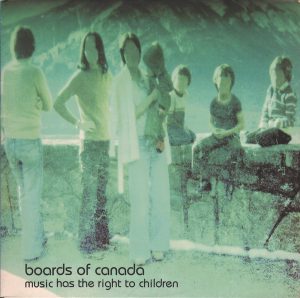
BY KAĞAN ÖZDEMİR (MBG/IV)
Among all the arts that humankind has created, music in particular has the ability to revive our long-forgotten memories, which we seem to bury deep beneath the layers of our consciousness. Sounds we hear at a vivid moment help us form strong connections with what we are feeling and perceiving in that particular setting. And even when many years have passed, we will still be able to recall that scene when we hear a particular song.
Music also has the “magical” power of evoking feelings and directing the way we perceive the world, in quite an unexplained manner. It can make us feel that we’re in a particular situation that we are not, in fact, in; or it can lead us to act as if we were in a music video while we’re walking in a crowd. (I know for sure that you too have done that while listening to the “Bitter Sweet Symphony.”)
Linking these two separate ideas together, we can argue that music leads us to form “false” memories, like the scene that we imagine in our minds when we hear a specific piece of music. The scene is familiar, and we remember it as if we had actually experienced it; however, it’s just an illusion created by our minds, deceived by music.
I realized this when I first became acquainted with ’70s music – I felt that I missed being at Beatles and Pink Floyd concerts, although both bands had split up or released their last albums long before I was even born. A memory of me following them is very vivid, clear as day, even though this never actually happened. This feeling, this scene, or this “memory” is what can be called a ghost: what is perceived to be real, yet has never existed. We form it involuntarily when hearing a song, viewing a distorted VHS or black-and-white video or seeing the old-fashioned furniture in our grandparents’ houses. The ghosts we create at those times seem to live forever; they were born at some time in the past, and they still live on today. The phrase “the past is inside the present” perfectly summarizes this idea.

This feeling, which most of us can recall having, yet do not readily notice at the time, can be explained by referring to the concept of “hauntology,” coined by the philosopher Jacques Derrida. The word summarizes and refers to what we can accept as a social memory, the vibe of a certain period and the surrounding concepts. Take the late ’70s and early ’80s, for example: we can all remember the neon purple lights, the sci-fi movies about space travel, the action films, and so on. We will tend to vitalize similar scenes, and that is what I will refer to as our “collective memory.” Even if we were not there, we will have similar images and concepts in our minds. Hauntological arts reflect what we have in our collective (or cultural) memories.
A picture is worth a thousand words; the same applies when talking about music. You can’t really explain what music is just by talking, as it’s about how individuals feel. Since we’re coming to the end of this discussion, I’ll recommend a few artists (and link them to a well-known Internet meme!) that are related to hauntology. One of the most critically acclaimed artists of this type is Boards of Canada. They are known for their layered song textures, utilization of obscure sound samples and their general melancholic and forlorn nostalgic vibe (listen to the album “Music Has the Right to Children”). Lorn can also be considered an artist who makes use of hauntological aesthetics, this time from a retrofuturistic perspective and with perfect production. The sound he creates is unique, and has a dark, dissociated, melancholic vibe. He seems like a rocker who bursts out from the speakers with pain, in the form of heavily distorted synths and masterfully written drums. Listen to the songs “Acid Rain,” “Until There Is No End,” “Greatest Silence” and “Sega Sunset.” Broadcast, another band from the same record label (Warp Records), are essentially a ’90s–early 2000s rock band who create a hauntological feeling in their own way. They reflect the aesthetic of the ’60s by employing synthesizers, drum machines and various sound effects. I would recommend them and their album “Tender Buttons” to fans of noise rock and shoegaze.
To conclude, I’ll disclose what the Internet meme I mentioned is. It’s something that we’ve looked at as a joke most of the time: vaporwave. Although it’s generally believed that vaporwave is just old popular songs slowed down to a lower pitch, it actually has many conceptual ideas and “aesthetics” behind it. Who among you doesn’t remember the spacey feeling you got when you first booted up your Windows 95 (or XP, for that matter)?
